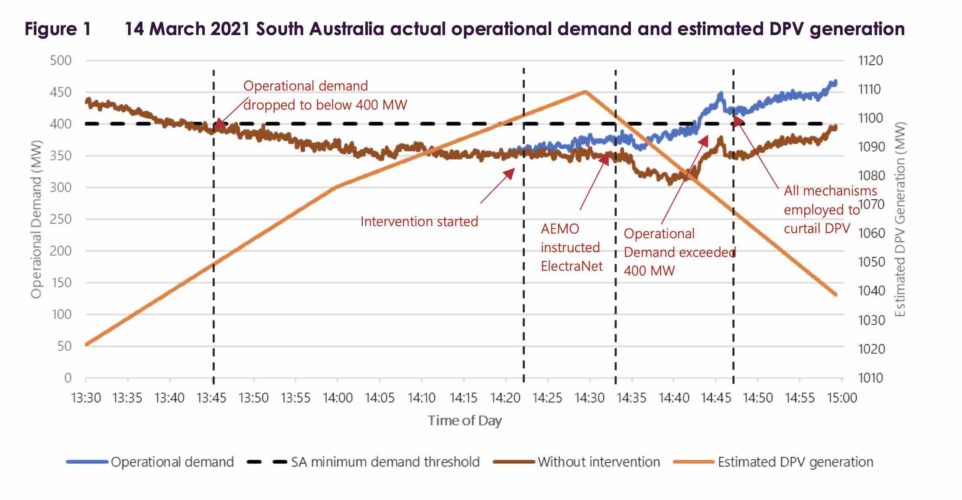The Australian Energy Market Operator has given itself more room to move on the sensitive issue of rooftop solar shutdowns, following a review of the only time it has had to deploy the move since it became part of its toolkit just over a year ago.
In March, AEMO did something that it had never done before, and likely hadn’t been done anywhere else in the world – it switched off large amounts of “non scheduled” solar to ensure it could maintain the South Australia grid in a secure state.
South Australia’s grid has a world leading share of rooftop solar. Last week, it reached unprecedented level of 92.6 per cent of local demand, helping to send the local grid into negative operating demand for the first time – another world first for a gigawatt scale grid.
That level of rooftop PV remains a challenge, but as long as the connection to Victorian grid is working the market operator has the tools to keep the grid secure. But when AEMO fears there is a credible risk that the connection might be lost, it wants to have the option to impose the shutdown rule.
That’s what it did on March 14 this year, when one major transmission line was out of service for scheduled maintenance, creating a real risk that the state could be isolated from the rest of the grid, making managing high levels of rooftop solar more difficult.
AEMO was not expecting operating demand to fall below 400MW, but there turned out to be more rooftop solar production than anticipated – a result of less cloud cover that predicted – and less industrial load, and the 400MW level was breached around 1.43pm.

In response, AEMO sent out instructions for 71MW of distributed solar PV to be curtailed, to ensure that a minimum operating demand of 400MW was maintained (see blue line above which shows its impact).
Around 14MW of this curtailment came from the new Smarter Homes initiative, which requires that all new installations and upgrades have inverters that can ride through disruptions, and that “agents” are appointed who have the ability to turn off the solar system when required.
The other 57MW came through direct control of solar systems above 200kW through AEMO’s SCADA system, and from voltage control.
A review into that event – being a world first – has led AEMO to revise the settings and some of the protocols of how it will operate this in the future.
“This event is significant because it involved active management of consumer DPV,” the report says. “Under current market structures, this is recognised as a ‘last resort’ measure, to be considered only when other options to maintain power system security are not available or have been exhausted.”
AEMO found that it was caught short by the unexpected dip below its minimum operational threshold, resulting in a 40 minute delay on curtailment.
As a result, it has now implemented an “early warning system” to take into account possible changes to anticipated demand, and has recommended changes to the Smarter Homes program to ensure that PV systems are cut off “at the meter” to ensure more visibility and accuracy to the interventions.
It has also given itself more flexibility by replacing the static 400MW minimum demand threshold with a “dynamic” demand threshold calculated on forecast conditions.
“This dynamic demand threshold manages both the risks of insufficient demand for minimum combinations of scheduled synchronous units and the DPV contingency exceeding secure limits,” it says.
“Depending on the forecast conditions, the dynamic demand threshold may be lower or higher than the previous threshold of 400MW. It is expected to reduce unnecessary DPV curtailment while maintaining power system security in scenarios where a 400MW threshold would not be sufficient.”









